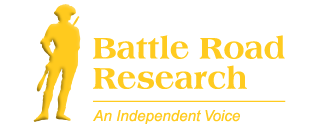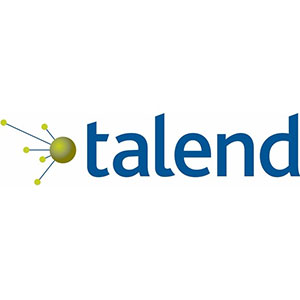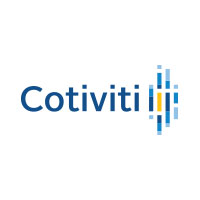Category: IPO Research
Talend: Enterprise Software Upstart
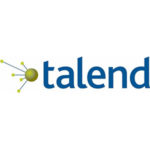 Talend S.A. (NASDAQ: TLND) is a recent addition to our Battle Road IPO Review Software sector coverage. Founded in 2005 and based in Suresnes, France, Talend is an enterprise software company that provides data integration tools, as well as implementation and consulting services. Consensus estimates call for revenue of $104 million in 2016, followed by $135 million in 2017. Talend is expected to post a loss of $0.97 per share in 2016, and a loss per share of $0.52 in 2017.
Talend S.A. (NASDAQ: TLND) is a recent addition to our Battle Road IPO Review Software sector coverage. Founded in 2005 and based in Suresnes, France, Talend is an enterprise software company that provides data integration tools, as well as implementation and consulting services. Consensus estimates call for revenue of $104 million in 2016, followed by $135 million in 2017. Talend is expected to post a loss of $0.97 per share in 2016, and a loss per share of $0.52 in 2017.
Talend priced its six million American Depository Share (ADS) IPO at $18 per share on July 28th. Each ADS represented one ordinary share. The net proceeds of nearly $92 million went entirely to Talend for general corporate purposes. The transaction was led by Goldman, Sachs & Co., J.P. Morgan Securities, Barclays Capital, Citigroup Global Markets, and William Blair. At a recent share price of $25, Talend’s post-IPO market cap is roughly $700 million.
Talend addresses a well-developed segment of the enterprise software market known as data integration tools. These tools are targeted to IT organizations in large companies to help them extract and prepare data for integration into software applications that are generally custom-built. The Gartner Group estimates the data integration tools market totaled $2.8 billion in 2015, an increase of 11 percent from the prior year. The largest and most established players in the market include IBM, Informatica, Oracle, SAP, and SAS.
Talend, a more recent entrant to the market, takes a more contemporary approach to software development and deployment than many of the market’s long time participants. Thus, Talend uses open source software as a foundation for many of its products, and has utilized the “freemium” model, in which it offers a free, stripped-down version of its software in order to entice users to begin working with the product for internal projects. It can then sell the more full-featured version of the product as a subscription license. The license is generally based on the number of users. This contrasts with the traditional software model, whereby software is sold as a perpetual license, typically based on the size of the CPU onto which the software is loaded.
Talend has targeted IT developers in larger companies, and its software is used by the likes of Allianz, Citi GE, Siemens, and Lenovo. Thus far Talend has deployed its software to more than 1,300 paying customers. Talend derives revenue from software subscriptions, roughly 80 percent of sales, and professional services, the remainder. Overall revenue growth in 2015 was 21 percent, but we note that subscriptions are growing faster than services—a good sign. The company posted a respectable 75 percent gross margin in 2015, but worrisome is the fact that the company generated a $21 million operating loss on a revenue base of $76 million. Hortonworks (NASDAQ: HDP), another relatively recent open source software company IPO, has struggled to achieve profitability as well, and this past month, the company fell to less than half of its IPO price, a warning sign for Talend that it must begin to operate profitably.
Through the first six months of 2016, Talend’s revenue has grown by 36 percent, including 40 percent in software subscriptions. The company’s gross margin was 76 percent, however its operating loss grew markedly from $10 million to $13.5 million through the first six months of this year. We also noted that the company’s accounts receivable DSOs at the end of the June quarter were 99 days, which strikes us as a relatively high figure for a company that sells subscriptions primarily. Post IPO Talend has a good balance sheet, with roughly $100 million cash, including its net proceeds, along with $12 million in debt. To learn more about where Talend trades relative to its software peers, post IPO, please contact Battle Road Research.
Cotiviti Holdings: Striving for Payment Accuracy
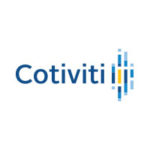 Cotiviti Holdings (NYSE: COTV), based in Atlanta, Georgia, is a recent addition to our Battle Road IPO Review Business Services sector coverage. The company provides payment accuracy solutions in the form of analytics and services to the healthcare and retail industries. For 2016, Consensus estimates call for revenue of $614 million, followed by a 10 percent increase in 2017 to $676 million. EPS is expected to be $1.30 this year, followed by $1.36 in 2017, an increase of just five percent.
Cotiviti Holdings (NYSE: COTV), based in Atlanta, Georgia, is a recent addition to our Battle Road IPO Review Business Services sector coverage. The company provides payment accuracy solutions in the form of analytics and services to the healthcare and retail industries. For 2016, Consensus estimates call for revenue of $614 million, followed by a 10 percent increase in 2017 to $676 million. EPS is expected to be $1.30 this year, followed by $1.36 in 2017, an increase of just five percent.
Cotiviti is the result of the May 2014 merger between Connolly Superholdings, a provider of post-payment accuracy solutions for the healthcare and retail sectors, and iHealth Technologies, a provider of pre-payment accuracy solutions for the healthcare sector. The leveraged merger was managed by Advent International, which now owns roughly 65 percent of the outstanding shares.
COTV priced its 12.5 million share IPO at $19 per share on the NYSE on May 25, 2016. All proceeds from the IPO went to the company, thus raising roughly $225 million, net of underwriter and other fees. The IPO was led by Goldman Sachs, J.P. Morgan, Barclays, Citigroup, Credit Suisse, Morgan Stanley, RBC Capital Markets, SunTrust Robinson Humphrey, R.W. Baird, and William Blair. At a recent share price of $33, COTV’s market cap is roughly $3 billion.
Cotiviti’s solutions help healthcare providers identify claim discrepancies throughout the claims process, from pre to post payment. Also referred to as recovery auditing, solutions from Cotiviti help government agencies and companies recover erroneous payments made to suppliers and customers. The US healthcare sector accounts for roughly 85 percent of the company’s revenue, and eight of the top 10 US healthcare providers are customers in some shape or form. Over 40 healthcare organizations utilize the company’s services, including Medicare and Medicaid. The remaining 10-15 percent of sales is derived primarily from the retail sector. Cotiviti counts eight of the top ten US retailers as customers. Cotiviti claims that commercial healthcare clients realized over $2.5 billion in savings utilizing its solutions in 2015, up from $2 billion in 2014.
Cotiviti has indicated that its ten largest healthcare customers on average have been customers of the company for ten years. That said, the company has significant customer concentration, as its top three customers accounted for 32 percent of sales in 2015, and its top ten customers comprised 59 percent of sales in 2015. Prior to its IPO Cotiviti had a net debt position of nearly $1 billion. Thus, it is not surprising that the company recently used proceeds from its IPO as well as cash from operations to pay down $238 million of its second lien credit facility. To learn more about where COTV trades in relation to its Business Services peers within our Battle Road IPO Review, please contact Battle Road Research.
